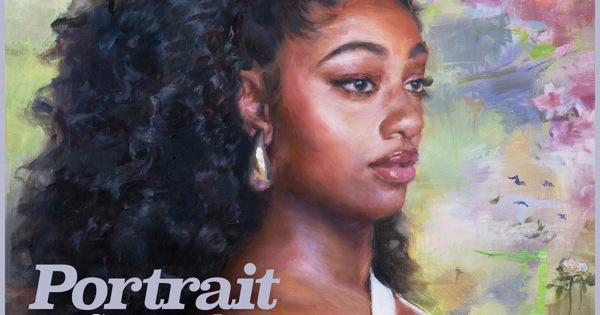Off the Record: Samara Joy

Samara Joy by Dane Thibeault
A voice at once familiar and new, charting a path through jazz’s past while shaping its future with grace.
BRONX | ELLINGTON

She rose to acclaim with her 2022 album Linger Awhile and quickly made a name for herself as a jazz icon of Gen Z at the age of 24; Samara Joy is undoubtedly the velvety voice of her generation. With a strong connection to the world of jazz both in a familial and historical sense, Joy bridges decades of the genre’s history in her vocalisations and social media savvy. Winning two GRAMMYs in 2023 for Best New Artist and Best Jazz Vocal Album, and a 2024 win for Best Jazz Performance, these are just a few of the ways that Joy’s love for her art have been returned in kind.
Portrait, Joy’s latest release, landed this fall as a headfirst plunge into the multifacetedness of Joy’s musicality and the authenticity of her relationship to her band. The album playfully pulls together unheralded jazz standards and original compositions to etch-a-sketch a granular portrait of Joy’s artistic vision, influences, and idols. Opening with “You Stepped Out Of A Dream”, originally from the 1941 musical Ziegfeld Girl, Joy’s vocals enter into kinetic conversation with her accompaniment. And while “A Fool In Love (Is Called A Clown)” rings with that evergreen quality of a jazz standard, it is in fact a new work composed by frequent Joy collaborator Donavan Austin.

In an industry that still systematically gatekeeps Black artists from the fruits of their talented labour, Joy continues to stand on business by making it her business to refine her vocal prowess and melodic storytelling. Portrait is yet another step in the direction of narrating her own story by curating a roster of collaborators and little-known jazz gems. She joined Cannopy, in between this latest release and her previous one, to talk about her studious approach to the genre, and circumventing those pesky gatekeepers.

Still reeling from a double Grammy win for her 2022 album Linger Awhile, 23-year-old Samara Joy has seen remarkable success in these early years of her professional career. With a voice already dripping with the tones, history, and artistry of great jazz singers like Ella Fitzgerald, Sarah Vaughan, and Nancy Wilson, it is no wonder her accolades now include the Grammy Award for Best Jazz Vocal Album─an award first given to Ella herself in 1977, the Grammy Award for Best New Artist─a big win for a jazz artist competing with more mainstream artists in a general category, on top of winning the 2019 Sarah Vaughan International Jazz Vocal Competition. As the self-proclaimed “first Gen Z jazz-singing star,” she grapples with the external pressure of her musical heritage and influences, while challenging herself to make mistakes, learn, and find her own way.
Linger Awhile, Joy’s major label debut under Verve, is her second album and follow-up to her self-titled album from the year prior for Whirlwind. It comprises some of the most classic jazz repertoire, some well known, and others more obscure. The feat of receiving the Grammy for Best New Artist with an album of songs many times older than the artist themself is something to be praised in its own right, especially given the instrumentation found on the album, a rotating cast that’s as small as two and, in the case of Thelonius Monk’s “‘Round Midnight”, as large as seven. Joy’s voice soars above the band, coupled with time-tested lyrics that at once evoke nostalgia and are immediately relatable to all who have experienced the trials (and errors) of romance.
Joy’s influences are like a walk through the Jazz Hall of Fame: from the legendary vocalists listed above, to Fats Navarro and Lester Young, to the late Barry Harris─a dear mentor to whom Linger Awhile is dedicated. Of note is the depth in which Joy has plunged into the history of jazz. Her exposure to the genre is relatively recent, beginning in earnest during her time in school at the State University of New York’s Purchase College. Her use of vocalese — a technique ubiquitous in the bebop era where one puts lyrics to instrumental solos or melodies — highlights her passion for the history of jazz, just as her artistic vision highlights a desire to build upon that history.







